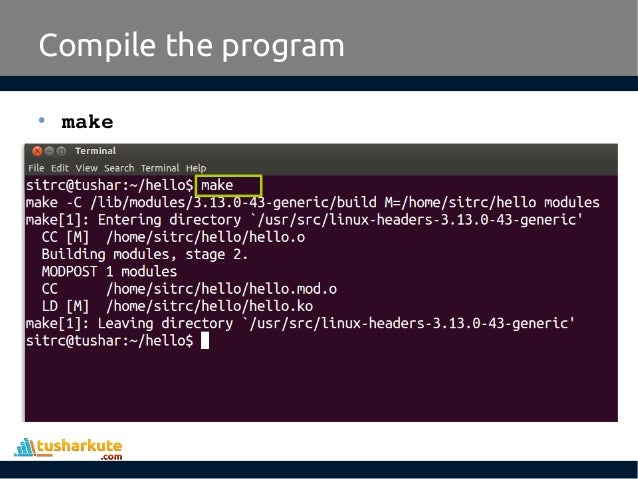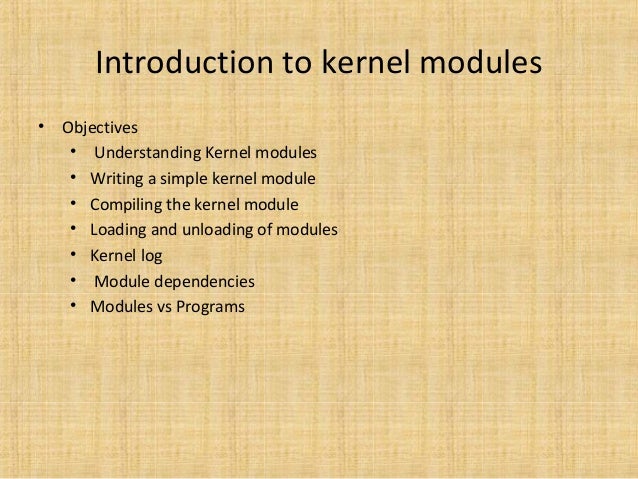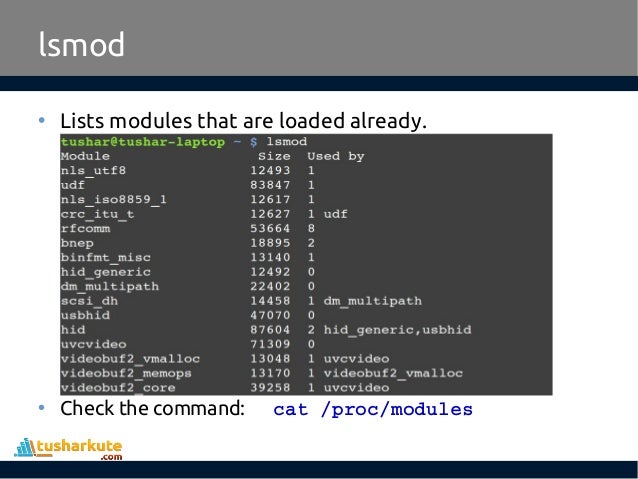

- #LINUX KERNEL PROGRAMMING INSTALL#
- #LINUX KERNEL PROGRAMMING FULL#
- #LINUX KERNEL PROGRAMMING CODE#
We will only use your last submission before the deadline for grading. It is strongly recommended that you prevent loss of work by committing to your course git often.

#LINUX KERNEL PROGRAMMING CODE#
Code Versioning: If your VM does become unusable, it is possible that Engr-IT will need to reimage your machine, causing you to loose any work stored on it. Use snapshots sparingly and delete all of your snapshots at the conclusion of each assignment. A note on snapshots – snapshots are NOT backups, and can go to unbounded sizes as you continue to use your VM. If the VM becomes unusable, you can go back to vSphere and restore from this snapshot. VM Snapshots: Before installing kernel module, be sure to use the vSphere console to take a snapshot of your VM. However, this will cost you precious hours of development time! Fortunately, these problems can be almost entirely avoided by taking the following precautions: If this happens, please post to Campuswire asking for help and a TA will work with Engr-IT to have your VM restored. #LINUX KERNEL PROGRAMMING INSTALL#
Inside your Virtual Machine you are free to install any editor or software like Gedit, Emacs and Vim.ĭuring the completion of this and other MPs, errors in your kernel modules could potentially lead to “bricking” your VM, rendering it unusable.

#LINUX KERNEL PROGRAMMING FULL#
Again, you will have full access and control of your Virtual Machine, you will be able to turn it on, and off using the VMWare vSphere Console. In this assignment, you will again work on the provided Virtual Machine and you will develop kernel modules for the Linux Kernel 4.4.0- NetId that you installed on your machine as part of MP0.
Zoom Recording of TA’s MP1 Introduction Session. Please consult the recommended links and tutorials in the References Section of this document as those documents detail everything that you need to implement this MP. Through the rest of the document and your implementation you will learn some of the basic mechanisms, structures and designs common to many areas of Linux Kernel Development. Also files, signals or security descriptors are not available. Note that that Linux Kernel lacks floating-point support, i.e., all the math must be implemented using integers. This limits what we can do and how we implement it. Glib, C++ Standard Library and other libraries reside in userspace and cannot be accessed in the kernel. Yet another important issue is the lack of userspace libraries. For example in kernelspace we are responsible for ensuring that interrupt handlers are as efficient as possible using the CPU for very little time. This makes concurrency much more difficult to handle in the kernel than in userspace. De-referencing a pointer that contains the wrong memory location and writing to it can cause the whole system to crash or corrupt important subsystems including filesystem and networking.Īnother important difference is that in kernel programming, preemption is not always available, that means that we can indefinitely hog the CPU or cause system-wide deadlocks. That is driver, modules, and kernel threads all share the same memory address space. The most important difference between kernel programming in Linux and Application programming in userspace is the lack of Memory Protection. In this section we will discuss a few of them. Kernel Programming has some particularities that can make it more difficult to debug and learn. EC Checkpoint 2: Complete Steps 1-8 by Monday, Feb. EC Checkpoint 1: Complete Steps 1 and 2 by Monday, Feb. You can earn extra credit by starting on this MP early: You will interface applications in userspace with your Kernel Module through the Proc Filesystem. You will learn the basic of Concurrency and Locking in the Linux Kernel. You will use the basics of the Linked Lists interface in the Linux Kernel to temporarily store data in the kernel. 
You will use Workqueues to defer work through the use of the Two-Halves concept.You will use Timers in the Linux Kernel to schedule work.You will learn to create a Linux Kernel Module (LKM).In this Machine problem you will learn the basics of Linux Kernel Programming.








 0 kommentar(er)
0 kommentar(er)
